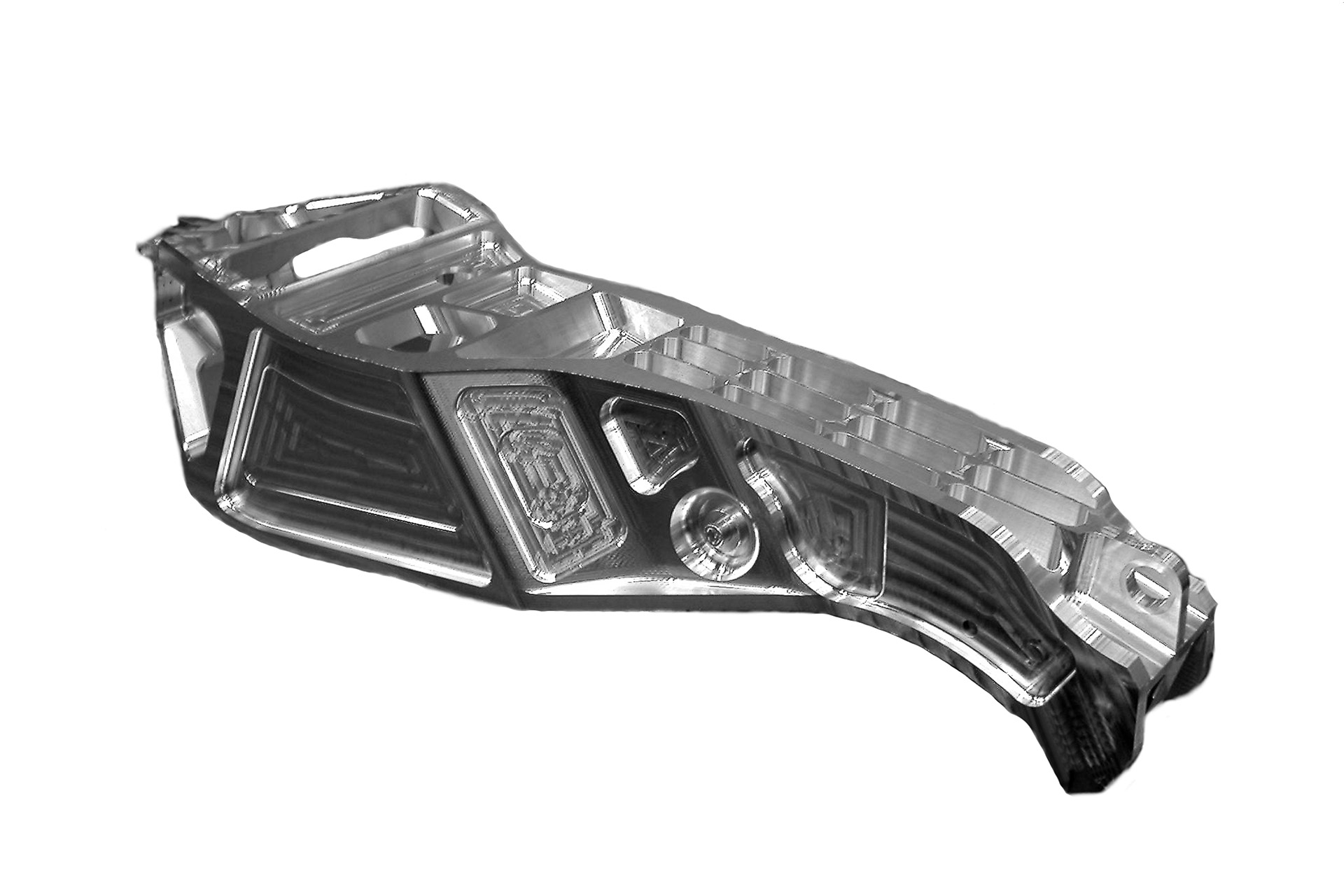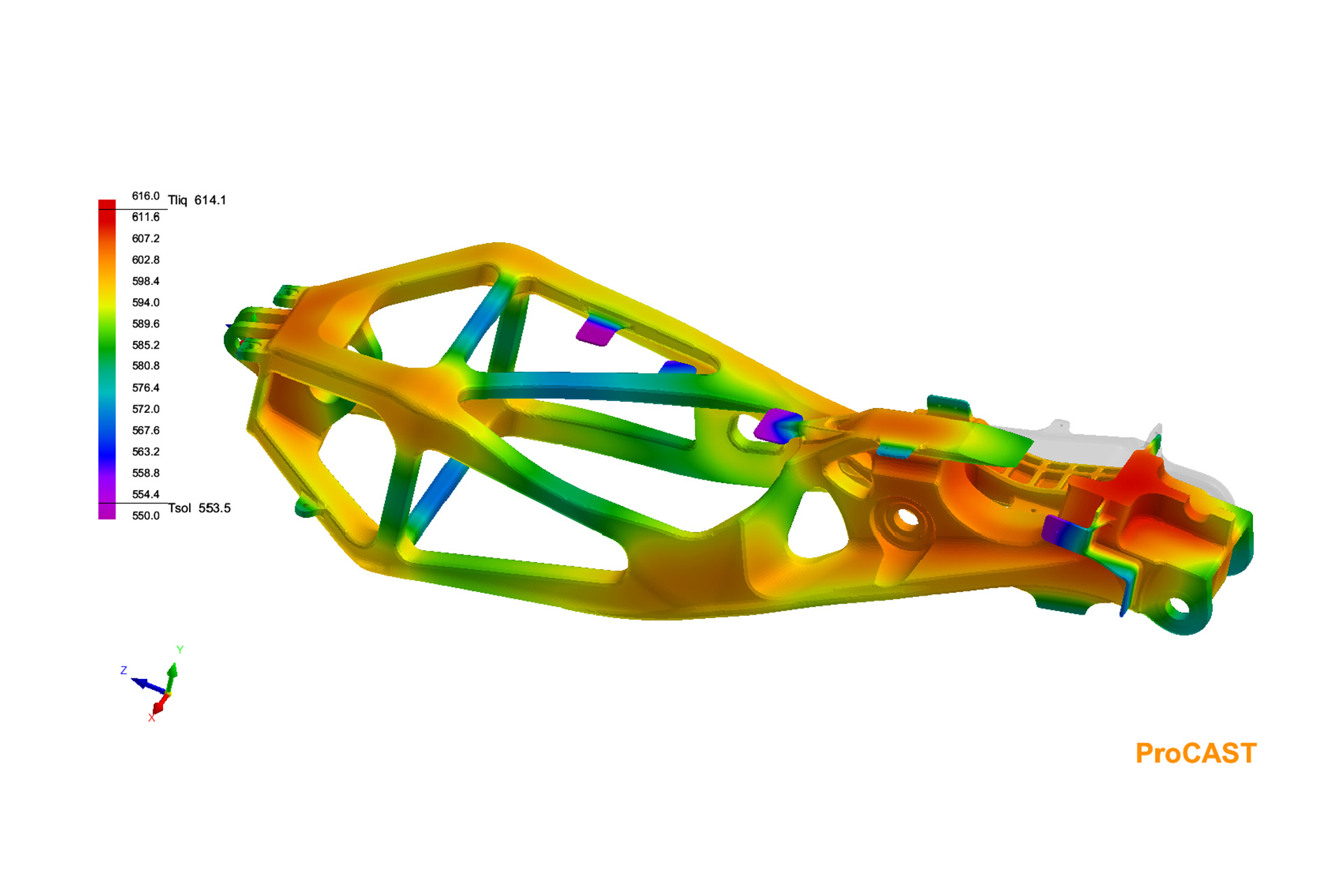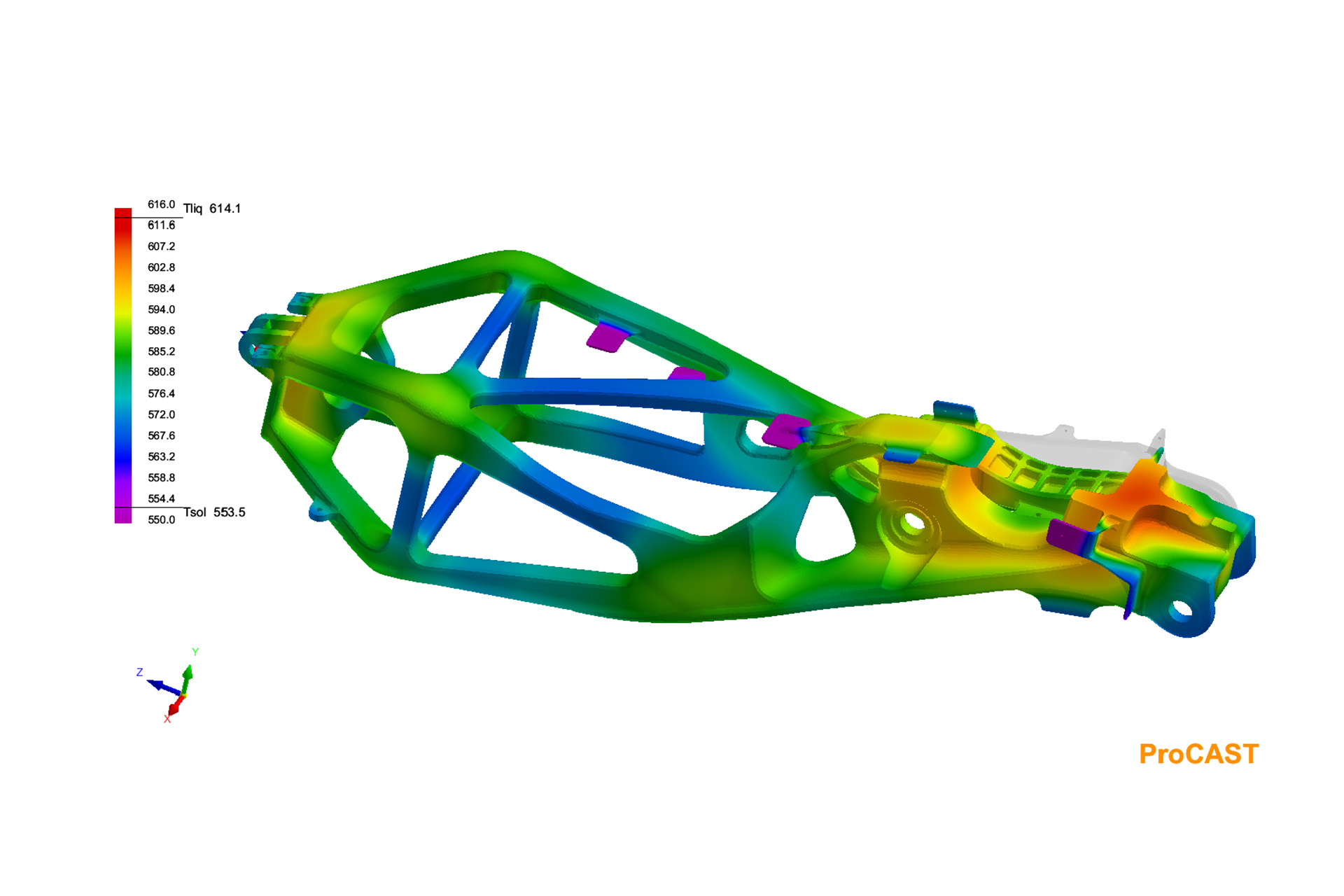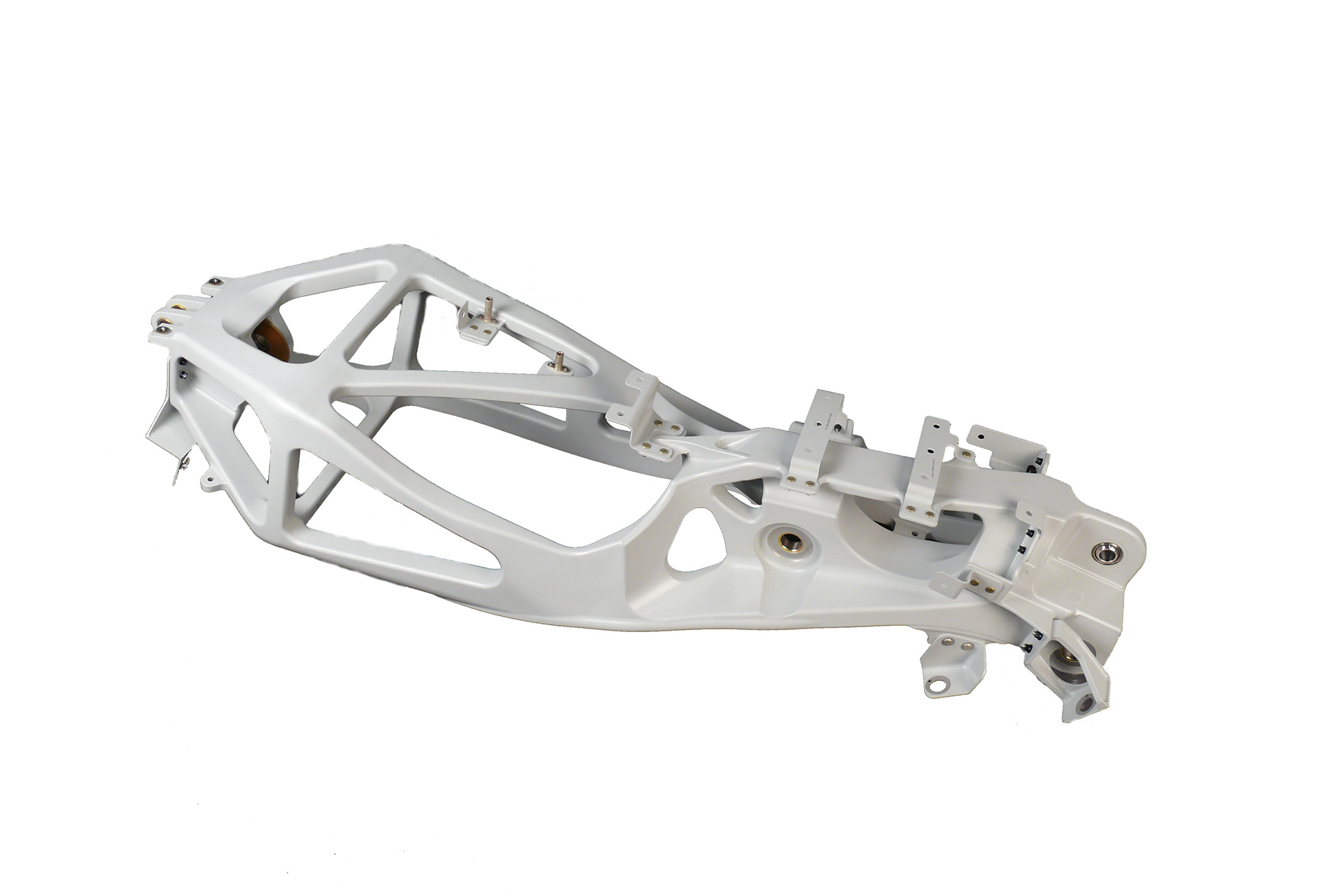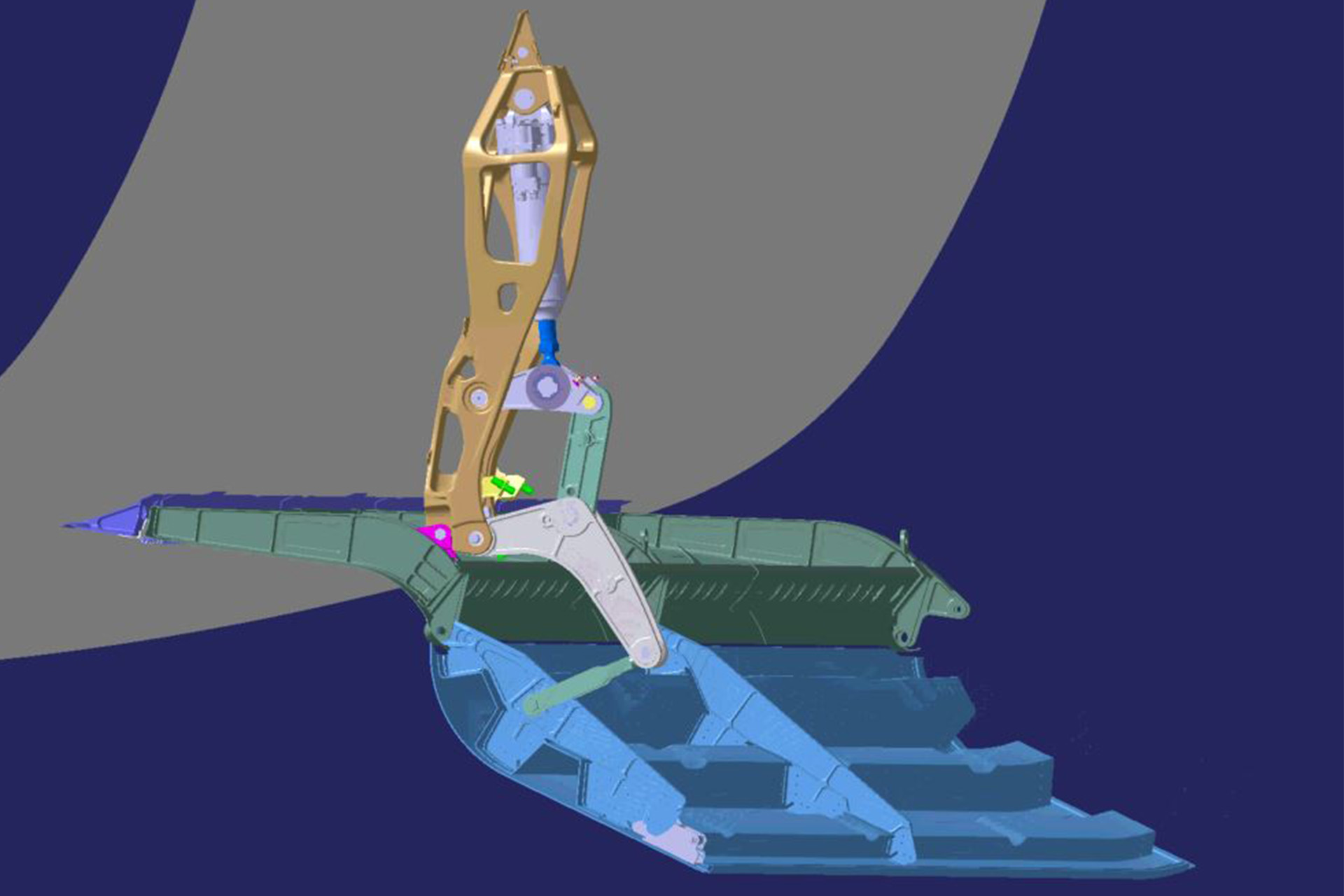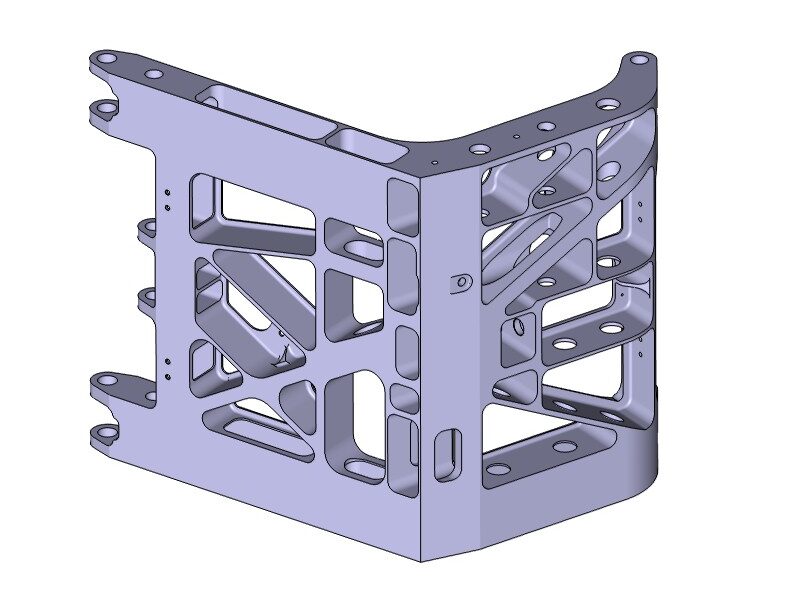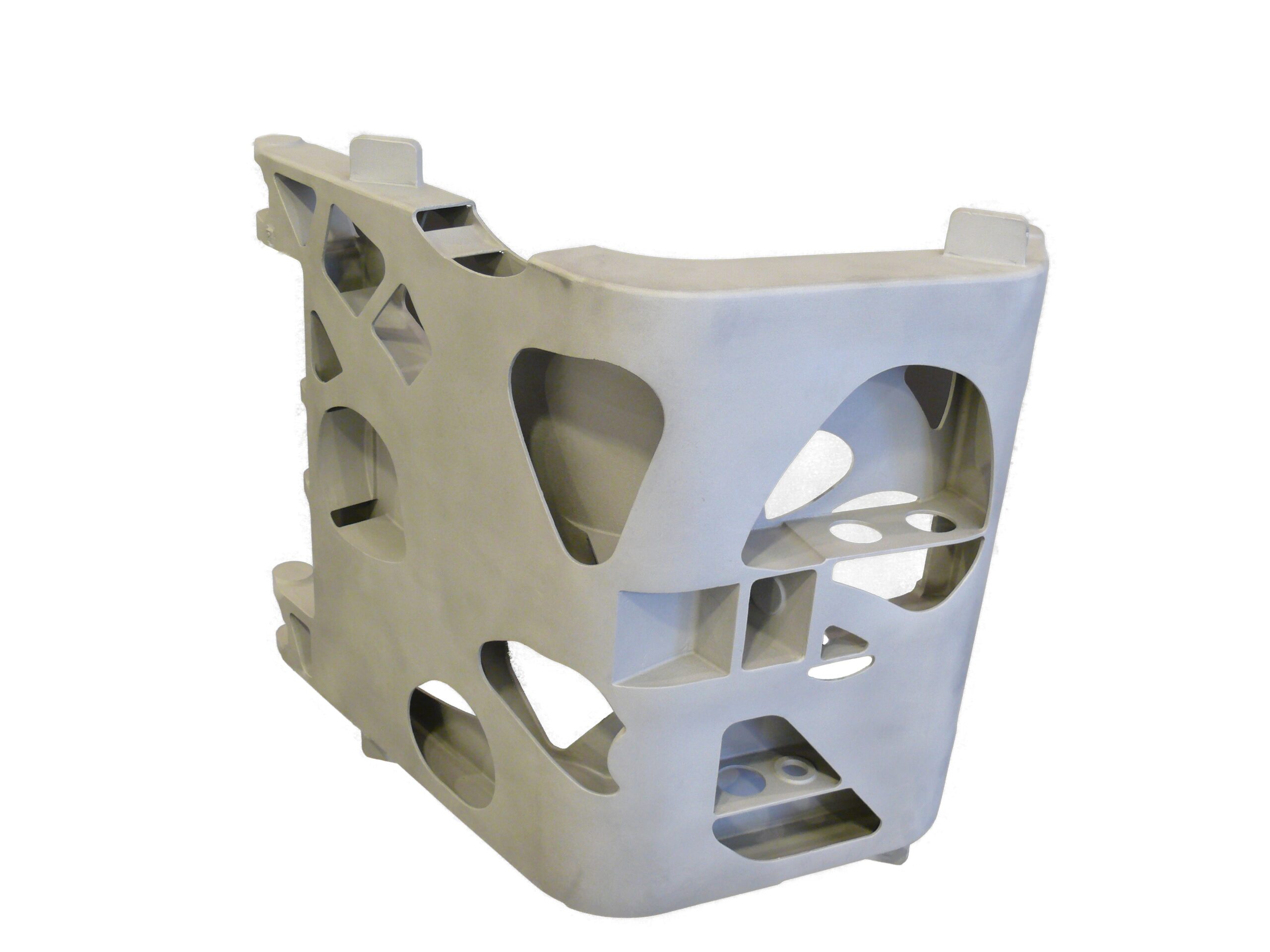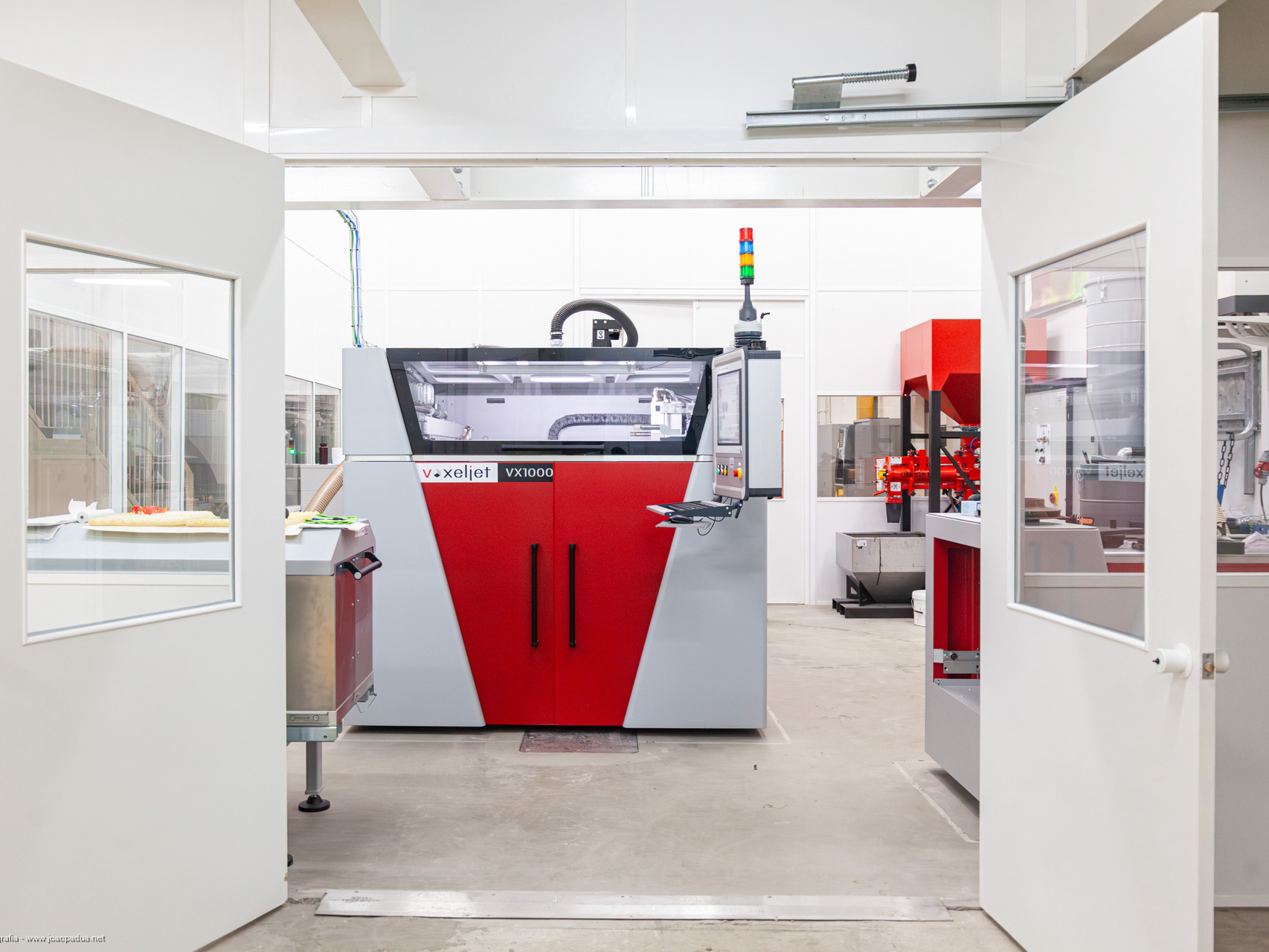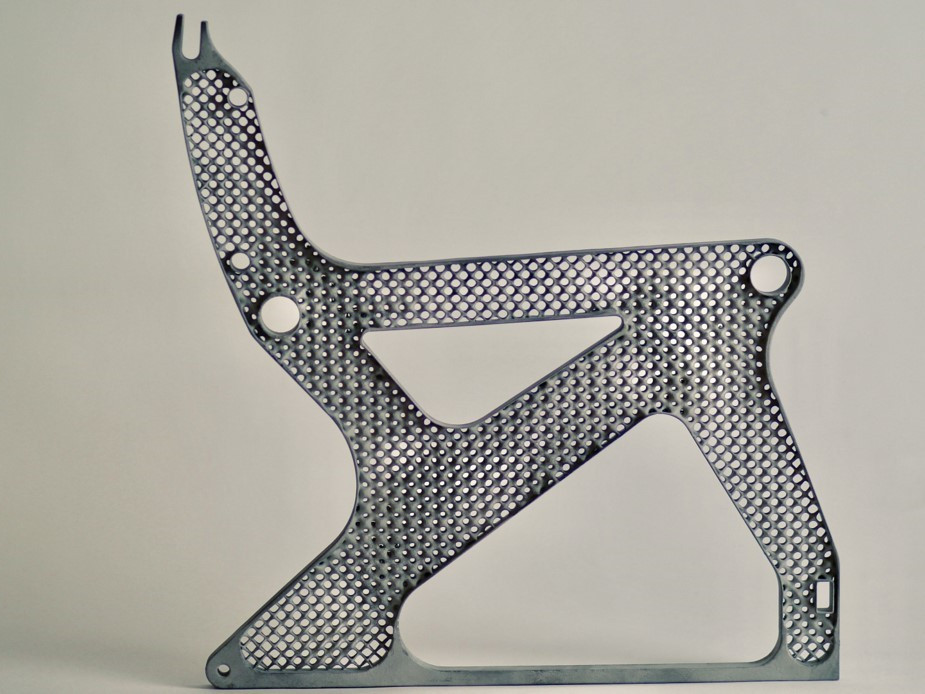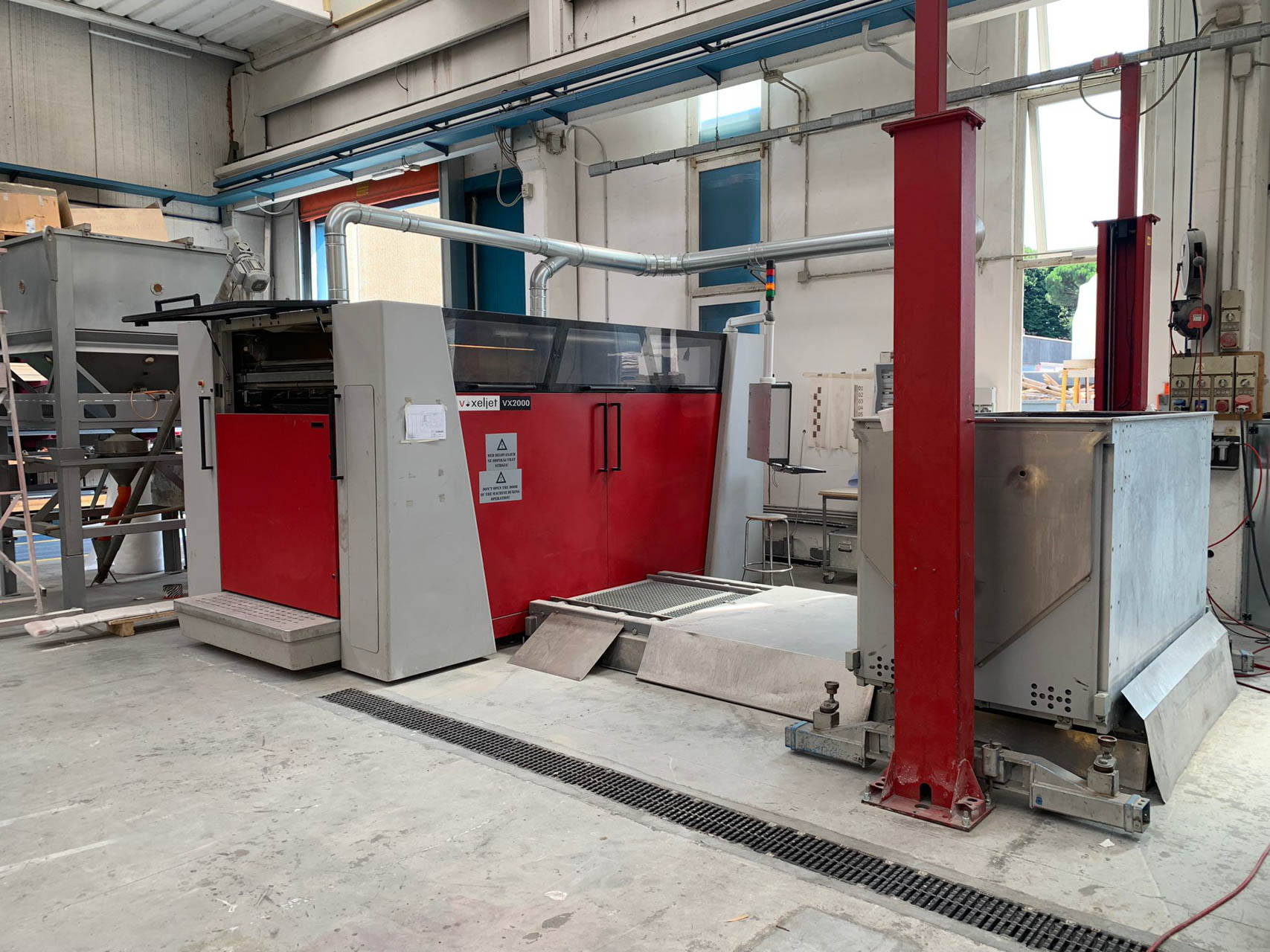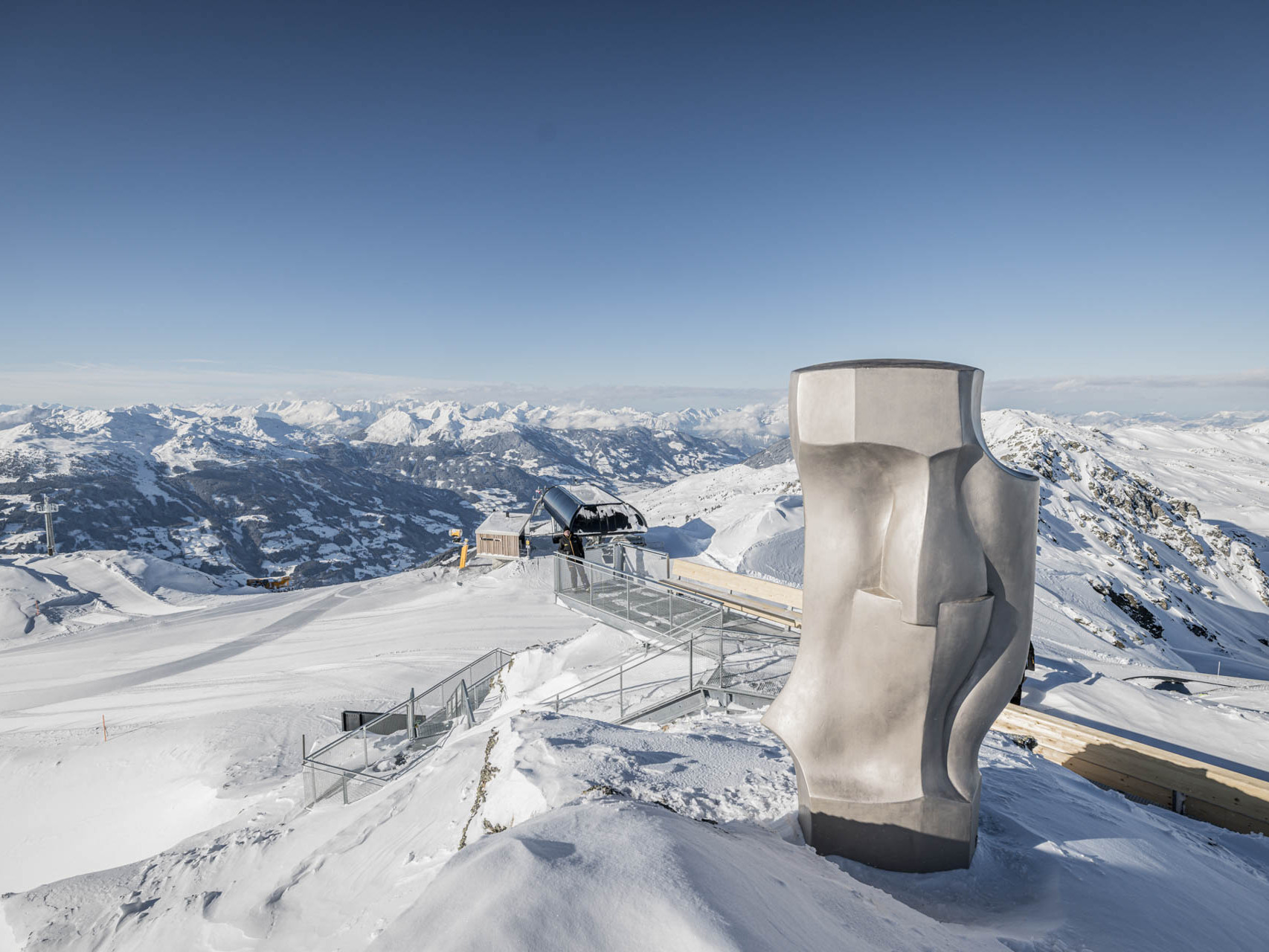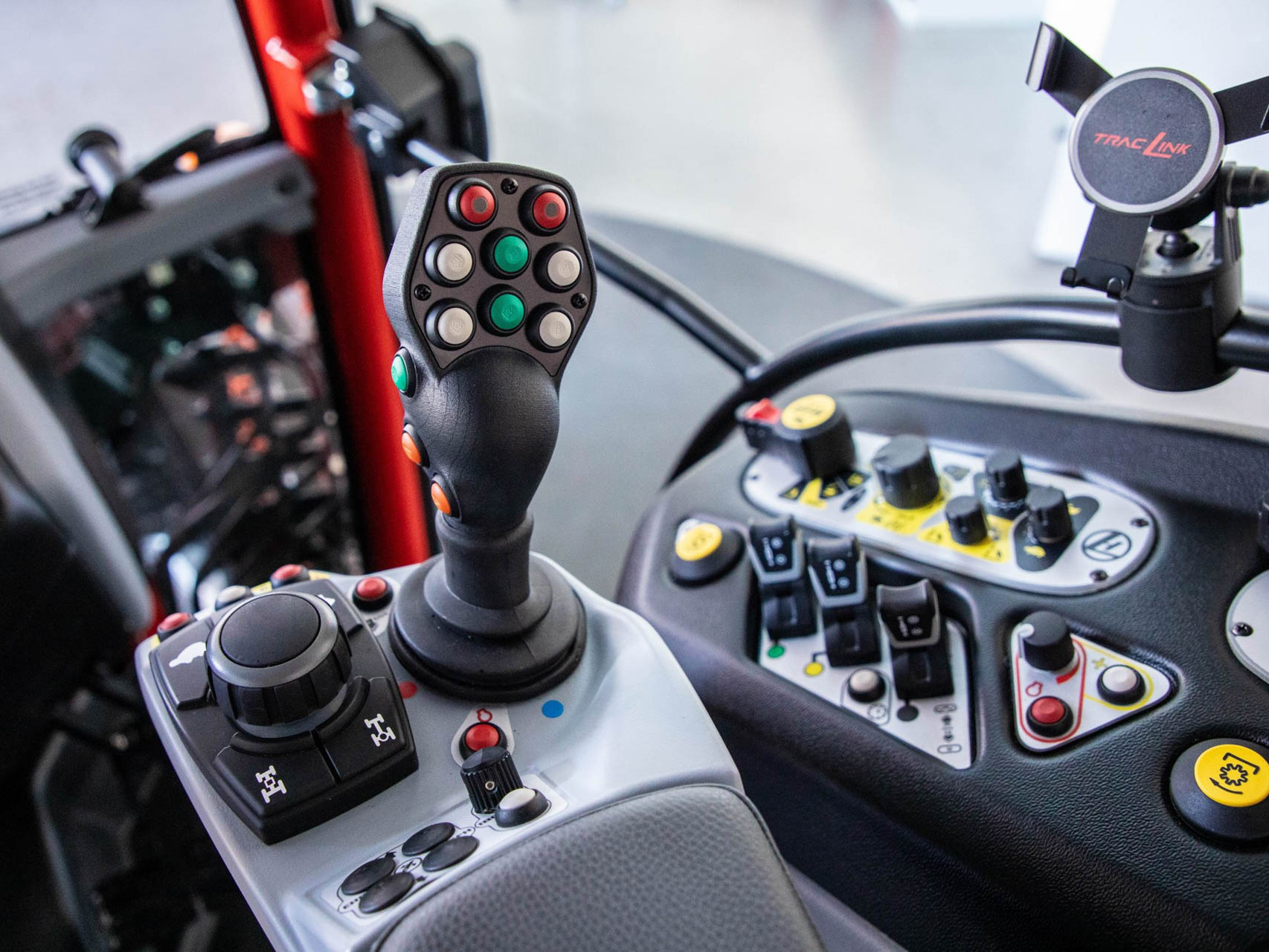- Home
- Case Studies
- Aerospace
- 3D printed patterns for TITAL, an aluminum and titanium investment casting specialist
Ready for takeoff: PMMA 3D Printing and Investment Casting for Aerospace Applications
TITAL GmbH is specialized in investment casting. For the production of high-quality aluminum and titanium investment castings, the medium-sized company, which has been part of the US Howmet Aerospace group since 2015, relies on 3D-printed PMMA patterns in addition to the lost wax process from its partner voxeljet AG.
3D printing-based investment casting is a particularly efficient tool for TITAL in terms of topology optimization, precision, weight savings and design freedom. It enables fast availability of patterns, a high degree of complexity and a smooth integration into existing production chains. Ultimately, the production of small quantities proves to be very cost-effective.
With its Headquarters in Germany, TITAL GmbH develops and manufactures highly complex, installation-ready aluminum and titanium investment castings for well-known companies in the aerospace, defense, electronics, optics, racing, mechanical engineering and medical technology industries. More than 90 percent of TITAL’s customers are in the aerospace industry, including leading global aircraft manufacturers such as Airbus and Boeing as well as engine manufacturers such as Safran Aircraft Engines.
Material flexibility - investment castings made from customized light metals
In 2022 TITAL produced 416 different aluminum parts and 275 titanium parts, in its plant in Bestwig, Germany. In total TITAL produced approximately 100,000 castings. Evolution is progressing and new alloys allow higher engine temperatures to improve performance and efficiency. The aluminum alloy A205 can support and partially replace titanium alloys due to its increased strength and operating temperature. As a result, weight savings of around 40 percent can be achieved. Compared with aluminum A357, which has a temperature resistance of <100 °C, A205 can withstand temperatures of up to 200 °C. The titanium alloy THORTM tops it all. At operating temperatures of up to 650 °C, so-called superalloys (nickel-based alloys) can be replaced partially. This makes it possible to achieve a weight reduction of around 50 percent.
In the investment casting foundry at TITAL, 3D printed PMMA patterns from the specialist voxeljet, located in Friedberg near Munich, are utilized. In the production of the “Channel Fitting” and “Hinge Arm” parts, for example. The channel fitting, which measures 1200 x 350 x 300 millimeters for the Airbus A400M, is located in the landing gear shaft of the main landing gear. It houses the hydraulic cylinder responsible for opening and closing the landing gear door. The Airbus A400M is a transport aircraft with a high payload capacity.
„This high payload is only possible if the empty weight is reduced. We saw an option to reduce weight by topologically optimizing the design of the channel fitting. After several processes of casting simulation and design optimization, we succeeded with a weight reduction of 17 percent."
Rainer Sabisch, Director Global Application EngineeringTITAL GmbH
The “hinge arm” is found in various types of aircraft. It is the connection between the aircraft fuselage and the aircraft door. TITAL manufactures the hinge arm for the Chinese passenger aircraft Comac C919. Again, TITAL was able to significantly reduce the weight of the part, previously being rather heavy, by 47 percent through topology optimization. “The switch from welded parts to investment casting worked very well in this case”, says Rainer Sabisch.
Customer Story TITAL GmbH
In this webinar, TITAL shares its experience with 3D printed PMMA patterns for investment casting of specialty alloys such as aluminum and titanium.
Compared to conventional production from a single bar (“machining from bar”), investment castings score highly in terms of crucial product properties such as weight, energy consumption or CO2 emissions. Investment casting allows significantly more efficient material use and higher recyclability than milling. The following example of a reference part from a public study by the German Federal Environment Agency illustrates this impressively. It is a part for an aerospace application cast with TiAl6V4 (dimensions 1030 x 110 x 180 millimeters):
| Merkmal | Frästeil | Feinguss |
|---|---|---|
| Gewicht | 90 kg (Rohmaterial) | 25 kg (Gießgewicht) |
| Buy-to-Fly-Verhältnis* | 24,3 | 6,8 |
| Energie zur Herstellung | 1.090 kWh/kg | 266 kWh/kg |
| Produziertes CO² | 650 kg/kg final part | 127 kg/kg final part |
| Ausschuss | 86,3 kg (Chips) | 19 kg (Anguss) |
| Recycelbarkeit | gering | gering bis exzellent |
*Ratio between the mass of the starting ingot and the mass of the finished component.
Wax or PMMA?
TITAL relies on both lost wax casting and 3D printing of PMMA for the production of investment castings. In the lost wax process, the required wax patterns are traditionally produced by injecting wax into aluminum molds. The wax pattern is then fitted with a sprue system. The feeder and riser are glued on accordingly and the entire pattern is covered with a ceramic shell. After the ceramic shell is in place, the wax is melted out. What remains is a hollow ceramic mold into which the molten metal is poured. The process is similar when using PMMA 3D printed patterns, but with a key difference: instead of aluminum tools for the wax patterns, only 3D data is required. Another advantage is that the sprue system can be printed directly. “In addition, making the wax tools takes a certain amount of time, they are not very changeable and flexible but very cost-intensive,” explains Rainer Sabisch. PMMA is a transparent thermoplastic material obtained by polymerizing the monomer methyl methacrylate. Due to its transparency and scratch resistance, PMMA is often used as a lightweight and shatterproof alternative to glass and is referred to as acrylic or Plexiglas. In 3D printing, it is processed as a powder and bonded layer by layer (layer thickness 150 µm) with a special binder to form three-dimensional objects. Voxeljets VX1000 is used for this. A large-format 3D printer with a build volume of 1,000 x 600 x 500 millimeters.
The question is: “When do I choose which process?” Florian Rauscher, Manager On-Demand Printing at voxeljet AG, explains:
"The decisive factor is the number of parts needed. In series production, when the quantities become large, wax injection molds are unrivaled and still the first choice. PMMA systems are at their limit here, depending on the complexity of the geometry. Especially for simpler geometries, the tooling costs are manageable and therefore the break-even is relatively low compared to 3D printing. Also, in terms of part cost."
Florian Rauscher, Manager On Demand Printingvoxeljet AG
A wax pattern molded over a tool costs less than a PMMA model. However, the production of those necessary tools is very expensive initially. TITAL has the corresponding production equipment in-house. The investment casting specialist can operate them in multiple shifts. The production of wax patterns is much faster, provided the tooling is already in stock. Additionally, higher capacities are possible via the wax injection molds set up in a series compared to PMMA 3D printing. The size of parts is not a factor in either process. “It is not a limiting parameter. TITAL can cast dimensions of up to 1.1 x 1.1 meters via both wax and PMMA, though not in one piece,” says Rainer Sabisch.
Finally, consistency of is another factor. “If it is known that a motorsport company changes their design every two days, the manufacturers won’t be able to keep up with the constant tool changes,” Sabisch says. In the aerospace sector, this applies to research and development. If a part goes through many iterations, especially in the initial phase, the use of PMMA patterns is more efficient and goal-oriented. “At least until the basis for series production is reached,” adds Florian Rauscher. Thus, PMMA models are excellently suited for development purposes and small to medium series production.
First contact with 3D printing
TITAL first encountered 3D printing over 20 years ago. It all started with a toolmaker who, even then, was very active in additive manufacturing at that time. Back then, they were working with polystyrene. “Polystyrene powder in combination with the laser-sintering process was the first process on the market that we could use to generate parts for our purposes,” Sabisch continues.
In 2005, voxeljet came along with its new PMMA material set. Ever since, TITAL has been purchasing PMMA patterns from voxeljet, who produces them using the binder jetting process. “The quality is good, the surface is good, the parameters are good,” says Sabisch with satisfaction. PMMA has become increasingly popular and has gradually replaced polystyrene completely. The focus was on dimensional accuracy, less on material properties. It turned out that the dimensional accuracy of polystyrene was nowhere near as good as that of PMMA patterns. Laser sintering is a hot process in which the polystyrene material is melted by a laser. The energy and heat introduced by this process often causes distortion in the patterns. Instead, PMMA models are manufactured at room temperature, which is why no warping occurs and high dimensional accuracy is achieved. Another plus point is the negative coefficient of expansion of PMMA. Instead of expanding, PMMA simply collapses when it encounters heat, like when the model is burned out of the ceramic shell. When the ceramic is enrobed and fired, it is less likely that the shell will break.
DMLS (Direct Metal Laser Sintering): An alternative to 3D printing investment casting patterns?
In the past, TITAL’s corporate parent, then named Arconic, operated some 3D printing manufacturing facilities in both development and production using metal 3D printing. However, the company distanced itself from purely metallic 3D printing during a restructuring phase over the past decade and has focused on investment casting. “I think metal 3D printing is good and exciting as such. It experienced a certain amount of hype and was an ‘enabler’ for us, opening doors to new technologies,” says Rainer Sabisch. “However, some things did not materialize as we had hoped. The breakthrough failed to materialize. It turned out that metal 3D printing couldn’t map everything after all, and it had a much harder time with safety-related aspects, including certification.”
One of the main reasons for investment casting is the part size. With metal 3D printing, large-format, topology-optimized structures can hardly be produced. At least not in one piece. Most metal 3D printers offer build volumes averaging 300 x 400 x 400 millimeters.
„With PMMA 3D printing, segmentation and subsequent assembly into a single part is possible.This way, customers can produce parts of up to 1.5 meters in size.“
Florian Rauscher, Manager On Demand Printingvoxeljet AG
In metal printing, there is also the problem of anisotropy. The mechanical properties are not the same in every axis. With investment casting, on the other hand, the mechanical properties are always identical, regardless of the axis. This is not the case with a printed part, so that these are not yet approved for safety-relevant applications, or must be thoroughly checked.
„We can produce safety-relevant, structurally highly stressed parts based on PMMA-printed patterns in the best quality, especially for the sensitive aerospace sector. That does not work with metal-printed parts.“
Rainer Sabisch, Director Global Application EngineeringTITAL GmbH
All around satisfied
Rainer Sabisch is very pleased with the collaboration with voxeljet: “voxeljet delivers high-precision PMMA patterns, even for very complex parts. They enable easy processability in the investment casting process and great design freedom for complex geometries.” The resource-saving process can be easily integrated into existing production chains. Through 3D printing-supported investment casting production, TITAL simplifies workflows and benefits from reduced downtimes, which in turn has a positive effect on the casting price.
More Case Studies
3D printing for sand casting in Portugal
CINFU is a Portugal-based training and innovation centre for the foundry industry. With a VX1000 3D printer in house, CINFU is gaining significant adaptive advantages for the foundry industry.
Weight reduction through 3D printing: lightweight seats for the aircraft industry
Lightweight seats produced using 3D printing can reduce costs and emissions in the aircraft industry.
Bronze-cast sculptures produced with 3D printing
In the Freedom Monument Sculpture Park, there are three bronze sculptures by artist Shaleigha D'Clark, created using 3D printing
Lanulfi Models optimizes mold making with VX2000
The integration of voxeljet’s VX2000 has redefined Lanulfis approach to metal casting. It offers significant reductions in lead times and enhances design capabilities.
3D-printed sculptures at 2500 metres
At 2,500 metres in the Tyrolean Alps, these 3D-printed sculptures enjoy a special view. They are the fulfilment of a long-held dream of Tyrolean artist Magnus Pöhacker.
3d printed joysticks for tractors and machines
For Lindner Traktorenwerke, 3D printing is already an alternative to injection molding. For example, for customized joysticks and control elements for their tractors.
3D printing patterns for large-scale sculpting
The Embrace is a public artwork in Boston to honor and remember the life of Martin Luther King and his wife Coretta Scott King. The sculpture was created with 3D PMMA printing and investment casting
Industrial 3D printing systems
Our portfolio of industrial 3D printers ranges from compact systems for research to additive series production.



















